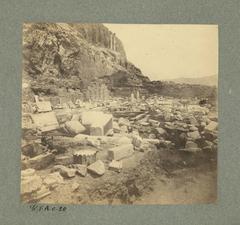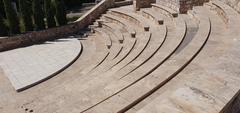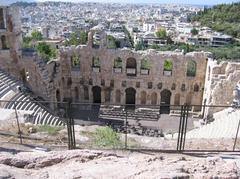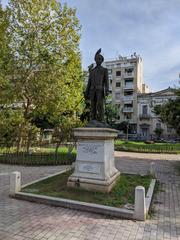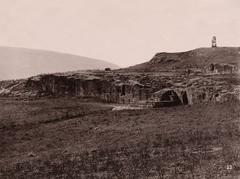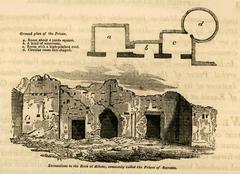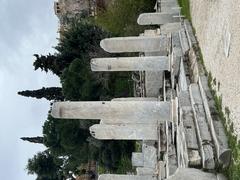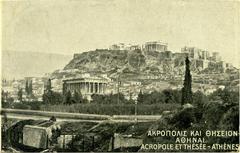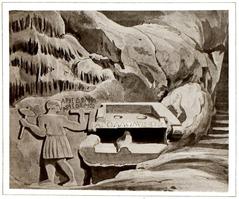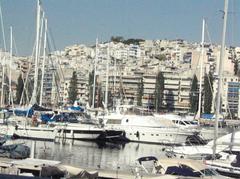
Electric Railways Museum of Piraeus: Visiting Hours, Tickets, and Travel Guide
Date: 04/07/2025
Introduction
Nestled within the historic Piraeus railway station, the Electric Railways Museum of Piraeus is a captivating gateway to Greece’s urban and industrial heritage. As the custodian of the Athens–Piraeus electric railway legacy—Greece’s first railway line, inaugurated in 1869—the museum meticulously preserves the technological, social, and cultural developments that shaped Athens and its bustling port. Visitors can explore a thoughtfully curated collection of artifacts, from original rolling stock and signaling equipment to rare photographs and personal memorabilia, all curated by passionate former railway employees and enthusiasts. The museum stands as a vibrant hub for education and community engagement, inviting travelers of all ages to delve into the story of Greek rail transport and its role in the nation’s modernization (Wikipedia; Exploring Greece TV; Athens24).
The Evolution of Electric Railways in Piraeus
The Athens–Piraeus Railway was a transformative project, connecting the city’s commercial heart to its major seaport. Initially powered by steam, the line was electrified in 1904, reflecting global trends in urban transit modernization. This pioneering shift not only improved efficiency but also positioned Athens as a leader in southeastern European transportation, paralleling the advancements seen in cities like London and New York (Wikipedia; Exploring Greece TV).
Founding and Community Roots
The museum is a testament to community initiative, born from the efforts of Manolis Fotopoulos—a retired Athens-Piraeus Electric Railways (ISAP) employee. Supported by the Retired Electric Railways Workers Union, Fotopoulos began collecting artifacts in 1995, scouring warehouses and personal collections. After a decade of dedication, the museum officially opened in November 2005, housed within the former Post Office at the Piraeus railway station (Athens24; Wikipedia).
Highlights of the Collection
With more than 6,000 objects and 3,000 books, the museum’s collection spans the breadth of Greek railway history (RadioMuseum). Notable highlights include:
- Historic Rolling Stock: One of the original twelve wooden wagons, offering a tangible connection to the railway’s earliest days (Exploring Greece TV).
- Photographs and Documents: Chronicling the evolution of the Athens–Piraeus line, Hellenic Electric Railways, and related networks.
- Uniforms and Personal Items: Donated by former employees, these items reflect the lives and identities of those who operated the railway.
- Tickets and Signage: An evolving display of railway tickets, billboards, and station signs from various eras (Athens24).
- Technical Equipment: From rails and traffic control devices to auxiliary carriages and telecommunication panels, these artifacts illustrate the technological advancements of the network.
- Model Displays: Including a railway tunnel replica and engineering diagrams (Dave’s Travel Pages).
Societal and Cultural Significance
The museum’s exhibits are carefully curated to reflect not only technological progress but also the broader social, economic, and political changes tied to the railway. The electrification and expansion of the network played a pivotal role in urbanizing Athens, fostering suburban growth, and integrating the city into the European economic sphere. The museum places these developments in a global context, drawing comparisons with international railway innovations (Exploring Greece TV).
Community Engagement and Preservation
Community involvement is foundational to the museum’s mission. Many artifacts were donated by former employees and their families, ensuring that the history preserved is both authentic and personal. The museum’s location within an active railway station enhances its connection to the ongoing story of Greek urban mobility, while volunteer staff—often retired railway professionals—enrich the visitor experience with firsthand knowledge (Athens24; Trek Zone).
Visiting Information
- Address: Piraeus Railway Station, 1 Karaiskaki Square, Piraeus, Greece
- How to Get There: Easily reached via Metro Line 1 (Green Line), multiple bus routes, or on foot from the port—convenient for ferry and cruise passengers (Discover Greece).
- Accessibility: The museum is wheelchair accessible and offers ramps and elevators, though visitors with special needs should confirm arrangements in advance due to the historic structure.
Current Visiting Hours and Admission
- Tuesday to Sunday: 10:00 AM – 5:00 PM (last entry 4:30 PM)
- Closed: Mondays and public holidays
- Admission: Standard ticket €5, concessions (students and seniors) €3, children under 12 free. Occasionally, admission is free—check the museum or tourism websites for updates.
- Tickets: Purchase at the admissions desk; group tours can be arranged by appointment (Athens24; Lonely Planet).
Visitor Experience and Practical Tips
- Interactive Displays: Signal operation simulators and hands-on exhibits appeal to both children and adults.
- Bilingual Labels: All major displays are in Greek and English.
- Photography: Non-flash photography is allowed; restrictions may apply in certain areas.
- Facilities: Restrooms and nearby cafes are available within the station; no dedicated museum shop, but souvenirs can be found in the vicinity.
- Recommended Visit Duration: 1–2 hours.
- Best Time to Visit: Weekday mornings for a quieter experience; check for special exhibitions or events.
- Safety: As the museum is in an active station, remain aware of surroundings and secure personal belongings.
Educational Outreach and Events
The museum offers educational programs for school groups, families, and enthusiasts. Special workshops, STEM activities, and guided tours are periodically available—contact the museum or check the official website for current schedules.
Nearby Attractions
Enhance your visit by exploring nearby cultural sites such as:
- Piraeus Archaeological Museum
- Hellenic Maritime Museum
- Mikrolimano Harbor
- Municipal Theatre of Piraeus
All are easily accessible by foot or public transit (Discover Greece; Lonely Planet).
Frequently Asked Questions (FAQ)
Q: What are the visiting hours?
A: Tuesday to Sunday, 10:00 AM to 5:00 PM; closed Mondays and public holidays.
Q: How much is admission?
A: €5 standard, €3 for students/seniors, free for children under 12. Admission may occasionally be free.
Q: Is the museum wheelchair accessible?
A: Yes, but some areas may present challenges due to the historic building. Contact ahead if you have specific needs.
Q: Are guided tours available?
A: Yes, for groups by appointment.
Q: Can I take photographs?
A: Yes, but flash may be restricted.
Q: Is there a museum shop or café?
A: No dedicated shop, but food and souvenirs are available in the station and nearby.
Q: How long should I plan for my visit?
A: 1–2 hours is generally sufficient.
Visual and Media Recommendations
Enhance your experience with the museum’s virtual tours and downloadable guides available online. Onsite, look for multimedia panels, historic photographs, and interactive maps. Bring a camera or smartphone to capture highlights—especially the restored rolling stock and vintage equipment.
Significance and Final Tips
The Electric Railways Museum of Piraeus stands as a testament to Greece’s industrial, urban, and cultural transformation. Through its collections and community-driven ethos, it preserves not only artifacts but also the stories and skills of generations who built and operated the region’s railways. Its strategic location within an active railway hub makes it accessible and relevant, bridging the past with the present and future. Whether you’re a railway enthusiast, history lover, or traveler seeking an authentic slice of Greek heritage, the museum offers a rich, engaging, and educational experience.
Travel Tip: Check for updates on opening hours and events before your visit, and consider combining your trip with nearby historical and cultural attractions. For real-time information, audio guides, and travel tips, download the Audiala app.
References
- Wikipedia
- Exploring Greece TV
- Athens24
- RadioMuseum
- Dave’s Travel Pages
- Trek Zone
- Discover Greece
- Lonely Planet
- Eskapas
- Greek Reporter
All information is current as of July 2025. Please verify hours and ticket prices before your visit, as schedules may change.


